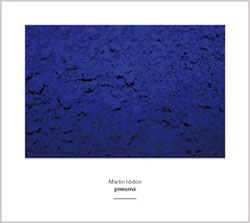
Composer Martin Iddon in a work of new conceptual modes of music making, with a ritualistic approach building strange sounds and stange actions in dense layers and intense timbres that demand a unique physicality from the player.
Out of Stock
Quantity in Basket: None
Log In to use our Wish List
Shipping Weight: 3.00 units
Sample The Album:
Martin Iddon-compsoer
Gavin Osbourne-flute
Alice Purton-cello
Nina Whiteman-mezzo-soprano
Catherine Laws-piano
Carlos Cordeiro-bass clarinet
Jeffery Gavett-baritone
Andy Kozar-trumpet
William Long-trombone
Linda Jankowska-violin
Emma Richards-viola
Jane Sheldon-soprano
Rachel Calloway-mezzo-soprano
Eric Dudley-tenor
Steven Hrycelek-bass
Click an artist name above to see in-stock items for that artist.
Label: Another Timbre
Catalog ID: at72
Squidco Product Code: 18799
Format: CD
Condition: New
Released: 2014
Country: UK
Packaging: Cardstock Gatefold Sleeve
Recorded at various locations on various dates.
On Martin Iddon's 'pneuma' by Ian Power
"Martin Iddon's music asks a lot of us. This disc, pneuma, asks even more, because it conceals the "real, physical human bod[ies]" that are so important to this music. Iddon asks musicians to play instruments they do not play, articulate notes they will not hear, and perform independently of partners they cannot ignore. The music depends wholly on the relationships those bodies have to each other; there are no pure, disembodied versions of these pieces. Of course, music that asks performers to perform out of their comfort zone is nothing new, but Iddon asks something different. The music has a physicality, not from speed, not from virtuosity or dexterity, and also not from strain, awkwardness, or exhaustion. The physicality on pneuma is one of wonder, of constant discovery, both on the part of the performers discovering new ways-not just new techniques, but new conceptual modes-of making music, and on the part of the listeners, wondering at the connection between the strange actions, the stranger sounds, and the total beautiful ritual. pneuma acts as a kind of intersection; the music is experienced from the same distance from all involved.
One of the largest influences on Iddon's music comes from the Renaissance: the polyphony of the likes of Johannes Ockeghem and Josquin des Prez. Polyphony then often served as a musical pilgrimage to divinity, shepherded by the intricate, sublime interweaving of complex, varied melodies that are derived from sacred chants. This technique pervades pneuma, as Iddon densely layers arresting, intense timbres, arising from the physical methods described above. As I listen to pneuma.sarx, I feel as though I have to give as much attention to each individual line as I do the entire texture, and all simultaneously; the instruments do not seem to complement each other, yet they are cumulatively so compelling. When the polyphony breaks, as in the gorgeously haunting baritone solo to end pneuma.kharis, I suddenly, strikingly feel the power each voice had this whole time; the essence of the music is revealed continuously (if never totally). To be sure, Iddon's instrumental voices do not have the steady, declaratory tone of those of Renaissance polyphony-but they, in their unwieldiness and un-coordination, still do interweave and intersect sublimely, still do provide a guiding hand toward (taken generally) the divine.
pneuma asks a lot of us because it requires us to outgrow our imagination. The titles, program notes, and performance setups all evoke lush, vivid worlds. Zeus impregnating Danaë with a shower of light; timid spirits called Hamadryads that comprise the ether of trees, protecting them from human violence. The Samuel Beckett passage that inspired the title head down among the stems and bells tells of lying one's head in a holly, surrounded by the 'minute life' of the garden's stems and bells. But the flora Iddon provides us-evoked foggily, masterfully by a fully prepared, amplified, wheezing, creaking piano-are not the sounds of a direct representation. The strange world of head down, as alive in silence as it is in sound, is a garden heard with alien ears, a perspective removed. Iddon mentions his interest in the human body as the intersection of biology and sociality, and the music acts similarly, like an intersection between this alien world and our perceptive capabilities. pneuma is like a flat panel, a window floating in the middle of a room, through which we hear things we could not otherwise.
Also of interest to Iddon are secrets: the secrets of listening in, the secrets of sounds. So what secrets can be discovered in, for instance, the grating, incessant, penetrating polyphony of a piece like the formidable Danaë? Music like this, that is so striking but so tough to firmly grasp, probes our private experiences of being, time, and spirituality (spirituality is taken most seriously when treated as a secret). Maybe this disc doesn't conceal the human bodies of the music, maybe it houses them, like a mythical jinnī. If we can release this music, it combines our secrets with the secrets of its construction, creating this window through which we hear another world. This other world is the essential secret of pneuma-one which can only be perceived in listening, and one which is always at the very threshold of recognition."-Ian Power, February 2014
Interview with Martin Iddon
You're probably better known as a musicologist than as a composer, but have you always combined both activities? And did the studying behind your two recent books (on Darmstadt and on Tudor's interpretations of Cage) affect the way you compose?
MI: Oddly enough, I started off as a composer-I'd been composing (after a fashion) since my early teens-and only became a musicologist by accident. While I was doing my MPhil (in musical composition), I took an optional course in musicology, basically because I didn't think I really knew what it was. It was there I encountered approaches to writing about music drawn from, say, Foucault and Derrida, but was confused by the fact that the musicologists we looked at were using (more-or-less) contemporary thought to look at the music of long-dead composers rather than (more-or-less) contemporary ones. Of course, I now know a lot more musicology than I did then... As a result, though, I thought I might have something to say about music which went beyond writing it. I'd deluded myself that it would be possible to keep composing while I wrote a doctoral thesis in musicology, but in the end composed pretty much nothing for six or seven years, until someone asked me for a piece while I was working in Cork, after which I've come to compose more and more.
I'm not sure that there's any strong relationship between the music and the words I write. Or, more accurately, I'm not sure I know what it is, other than to say that composing and musicology both involve trying to think about what music is, how it works, and the sorts of things it might be able to say. Some of those questions seem to me only possible to think about by writing music, others by writing words.
I do, mind you, like musical puzzles, both in a sort of 'early music' sense and in the ways in which David Tudor set out to 'solve' Cage's scores, and both of those things occur in some of my music, whether it's a puzzle I've already worked through in the process of composing or one where elements remain unsolved, to be handed on to the performer.
Your pieces are evidently quite demanding of the performers. Not so much in a 'new complexity' way of requiring extraordinary virtuosity, but most of your pieces do seem to be asking the performers to do things which they haven't quite done before. Is this a deliberate strategy, or simply a by-product of trying to find new sounds?
MI: It's a bit of both really. Years ago, I worked on a project with school children who'd had little or no access to practical music making. I'd got the local music service to donate some instruments which were, near enough, beyond use (or repair, in some cases) and the participants used these to compose music. Because they'd had no musical training, they started off trying to play them how they thought they 'ought' to be played, which didn't work of course. So they took much more experimental approaches to the instruments, which generated, to my ear, much more interesting sounds. Since then, I've always tried to be a bit like a child exploring the instrument, not least in that as much as possible I write at the instrument, regardless of whether it's one I play or not. One of the reasons why my string trio, Danaë, asks the performers to play consistently with a bow in each hand is because of the conceit that, if you'd never seen the instrument before and opened up a professional's case, you'd be highly likely to find two bows in it. It seems to me to be equally likely that, in that situation, you'd presume you ought to use both to make the instrument sound. It's a nice side product that I like the resulting sounds so much...
This sort of approach often leads to a very physical relationship between the performer and the instrument, and that physicality is often audible (or visible) in performance. Much though the sorts of music I'm drawn to (and write) are often concerned with quiet, sustained, still textures, of the sorts that might invoke 'other' spaces, I'm concerned that many musics like this almost seem to ask the listener to enter some sort of transcendent, meditative state which, simultaneously, asks the listener to ignore that a real, physical human body is there. What I'm ideally after is a music that somehow expresses both this supra-sensuous world but where the performative physical effort required to create it is always audible too. One way of doing that seems, precisely, to work with quite demanding physical materials, so the performers (perhaps) encounter their own physical relationship with the instrument afresh.
Yes, that's a valid point about the physicality of the musician's body sometimes being ignored or suppressed by listeners to contemporary music. But I think such physicality applies much more with acoustic than electronic music. Is your interest in this aspect of performance partly why you use electronics in a very limited way on your CD 'pneuma'?
MI: In the only piece on the disc which has an electronic element as such, hamadryads, it provides a simple, practical solution to the way in which the pitch material of the piece is derived from a gradual, sort of hyper-Pythagorean detuning of the opening pitches of Josquin's Nymphes des bois, which ends up with pitches up to hundredths of a cent away from tempered tuning! The piece uses in-ear guide tracks in order to help the singers achieve this (although, of course, no-one listeningtothe piece ever hears the 'naked' sine wave).
I also used amplification in head down among the stems and bells, and here the result is quite the opposite of the 'unheard' electronics of hamadryads: the amplification is there precisely to allow listeners to hear the sounds of the piano which traditional playing disguises, the 'minute life' of the piano, as in the full version of the Beckett quotation from which I've drawn its title:
It is here one would lie down, in a hollow bedded with dry heather, and fall asleep, for the last time, on an afternoon, in the sun, head down among the minute life of stems and bells, and fast fall asleep, fast farewell to charming things. (Samuel Beckett, Mercier and Camier)
Elsewhere, when I use electronics alongside instruments they tend to be just as simple, typically sine waves, in a way which, I hope, also draws attention to the difference between something so obviously 'artificial' and, again, the physicality of the performer. The simplicity, mind you, is also a by-product of my technical incompetence... I've also regularly worked under the moniker [zygote] with a fixed media artist, Antti Sakari Saario, whose technical competence is so great it quite outweighs my ineptitude in this area and there we've often worked with materials which also highlight a particular sort of physicality. In one piece, dead white male (edit), this is because all the sonic material is below 30Hz (or thereabouts), in the sort of region where resonance is physically felt by the body at least as much as heard by the ear. In another, proposition 6a: ceci n'est pas une machine de guerre (Refrain), all the materials are drawn from the destruction of an (again, beyond repair, I promise...) upright piano, which we'd hauled over from Morecambe to Antti's place in Lancaster. Since we used those recordings almost entirely without any signal processing, I think it's still possible to hear some of the physical effort expended in breaking up the instrument over the course of a couple of days.
Before we talk about the individual pieces on 'pneuma', I want to ask one more general question. All but one of the compositions on the disc have titles in ancient Greek. Why?
MI: I wish there were some good reason I could give! But it's really a coincidence in many ways. Danaë shares its name with a James Turrell installation (alongside two other Turrell-inspired pieces, Mohl ip for string quartet and spinther for ensemble). hamadryads is just the Greek of which Nymphes des bois (from which its pitch material is derived) is a translation, while pneuma.kharis and pneuma.sarx take their titles from a cluster of linked ideas set out in Alain Badiou's book, St. Paul. That said, I was hugely interested in Greek mythology as a child and am fascinated by Greek, especially pre-Socratic, thought now, so that's doubtless a part of it too, though I hadn't noticed until you asked that pretty much everything I've written since 2009 has a Greek title... I do certainly like the way Greek titles look, whichever alphabet they're written in.
So to the pieces themselves. First 'pneuma.sarx': could you explain how this piece works? Is it right that the notation is fixed, but the three parts are relatively autonomously from each other?
MI: Exactly right. In pneuma.sarx there are highly prescriptive parts for the flute, the cello and the mezzo-soprano. Each of which involves 'decoupled' notation such that, for instance, the singer has independent notation of pitch, consonants, and the vowel shape (this last essential controlling gradual shifts of the vocal cavity). Each parameter is notated with independent (so-called) irrational tuplets alongside a high level of rapid tempo changes (which are consistent for each parameter). Despite the seeming complexity of the notation, though, the actual material is very simple, and the tension there is, I hope, something which develops a sort of interiority to the physical dimension I've already mentioned: in Danaë, say, there's also a visual theatre in the live piece as the members of the trio grapple with both bows; here, if there's a physical theatre, it's more experienced by the performer than by the audience, but I think there should still be a strong aural trace of the tension between the simplicity of the surface materials and the complicated acrobatics demanded of the performers in order to produce something so simple. The same sort of tension happens on a slightly more 'macro' level since, even though the individual parts are highly determined-demanding a particular sort of interior focus-there's no synchronisation between the parts at all. The recording on the disc, then, is just one possible configuration of the relationship between the three performers.
I'm really taken with the way the voice works in 'pneuma.sarx'. I often don't like voices in contemporary music, let alone opera, but here I find the quality of sound quite haunting and beautiful. Two other pieces on the disc also use voices; so is it something that you're drawn to generally, and if so why?
MI: To be honest, I was very wary of the voice for a long time, both because it seemed to be difficult to make it amenable to the sorts of ways of working I was interested in, and because, to the extent that I have an instrument of my own-I'm no performer-it would probably be the voice. I can't really remember much of my life before I was a choral singer. It's certainly the case that that style of singing (rather than an operatic one which, like you, I find difficult) appeals to me, doubtless as a result of having grown up in that sort of environment. Practically speaking, of course, simply being asked for pieces by singers makes all the difference too: Nina Whiteman commissioned pneuma.sarx for Trio Atem (and had previously asked me for a tiny vocal fragment, pneuma.pistis); Jeff Gavett asked me for a piece for his ensemble ekmeles, after hearing the premiere of Danaë in New York, and this became hamadryads, and this then led to my writing pneuma.sarx's companion piece, pneuma.kharis, for another ensemble that Jeff sings with, loadbang. Jeff's also sung pneuma.pistis a number of times.
So voices have only recently become central in your composing, but I suppose they fit in well with your interest in the physicality of performance. But what about the 'lyrics'? Is the singer simply making sounds in 'pneuma.sarx', or are these textual fragments? And if there is a text, what is it and why?
MI: In truth, it's precisely because of the difficulty of making that theatricality visible that I was concerned about the voice: that's one reason why there's a glass harmonica in hamadryads. There's then a very physical process-the wetting of the finger and the difficulty of getting the glass to ring effectively-that interferes with the 'pure' sound of the voice. I hadn't really realised at the time, mind you, that the in-ear guide track the performers have also acts as a sort of interference, but in a way much more like the interiority of pneuma.kharis and pneuma.sarx. But none of this answers the question you actually asked...
In hamadryads, pneuma.kharis, and pneuma.sarx there is an 'original' text, but in each case they've been subjected to a sort of obliteration, so that what appears in the pieces has the same statistical distribution of vowels and consonants as the original text, but is not in the same order, thus removing all of the semantic content, but hopefully retaining some sort of residue of the original. The text for hamadryads, hardly surprisingly, comes from the text for Josquin's Nymphes des bois, while pneuma.kharis and pneuma.sarx both have texts from St. Paul, again recollecting the Badiou book which suggested their titles. In the case of pneuma.kharis, the text also refers to the trumpet in the ensemble and, more obliquely, to the process through which Paul's text was sieved before in appeared in the piece:
καὶ γὰρ ἐὰν ἄδηλον σάλπιγξ φωνὴν δῷ, τίς παρασκευάσεται εἰς πόλεμον; οὕτως καὶ ὑμεῖς διὰ τῆς γλώσσης ἐὰν μὴ εὔσημον λόγον δῶτε, πῶς γνωσθήσεται τὸ λαλούμενον; ἔσεσθε γὰρ εἰς ἀέρα λαλοῦντες.
For if the trumpet makes an uncertain sound, who will prepare for battle? So likewise you, unless you utter by the tongue words easy to understand, how will it be known what is spoken? For you will be speaking into the air. (1 Corinthians 14: 8-9)
In pneuma.sarx, there's a reference to just that distinction between the corporeal and the other-worldly, since pneuma means 'breath' or 'spirit' while sarx means 'flesh' (and is not quite the same, then, as the usual Greek word for the body, soma):
οἱ γὰρ κατὰ σάρκα ὄντες τὰ τῆς σαρκὸςφρονοῦσιν,οἱ δὲ κατὰ πνεῦμα τὰ τοῦ πνεύματος.
For they that are after the flesh do mind the things of the flesh; but they that are after the Spirit the things of the Spirit. (Romans 8:5)
Moving on to 'pneuma.kharis', I like it the way the voice is integrated into the ensemble rather than being privileged and foregrounded like voices usually are. Presumably this is intentional? And I also assume that the four parts (trombone, trumpet, bass clarinet, voice) are autonomous in the same way as in 'pneuma.sarx'?
MI: Right in both cases. In truth, the same lack of privilege should be more or less evident in pneuma.sarx too. One reason for the fragmentation of the text is that, in the end, I think it obviates any sort of attempt to listen to the words. Or I hope it has that effect, in part at least.
Although the parts are autonomous in relation to time, they clearly work together musically. Are you using a harmonic system, and is it different for each piece?
MI: The pitch materials for both pneuma.kharis and pneuma.sarx are the same, and they're derived from that earlier vocal fragment I mentioned, pneuma.pistis. Originally those materials come from a little bit of spectral analysis (though of what, I'm afraid I now forget...!) which then got modified after doing some initial rehearsals with Nina Whiteman, both because what I'd written wasn't quite right for her voice and because I wasn't quite convinced by the pitch relationships in practice (although it didn't need much chopping and changing to get it right). So I think the pitches in all three pieces are now quite some way distant from however it was I originally conceived of them.
You said earlier that 'hamadryads' is based on Josquin's 'Nymphes des Bois'. Why did you choose Josquin, and how did you use the source material?
MI: I was invited to write a short piece for a memorial concert for the founder of Ensemble SurPlus, James Avery, who died in 2009. Given my interest in early music, it occurred to me quite quickly that a good place to draw the material from the piece from would be a memorial piece from the fifteenth century. In this case, I took the pitch material from Ockeghem's lament on the death of Binchois, Mort, tu as navré de ton dart, and squashed it into a rather more narrow band of pitches, arranged for cello, double bass, bass clarinet, and contrabass clarinet (on mobile strips, rather as in pneuma.kharis and pneuma.sarx), as the piece tu as navré (d'après Johannes Ockeghem). Because Josquin wrote a lament on the death of Ockeghem, Nymphes des bois, and Gombert one on the death of Josquin, Musae Iovis, it seemed to me that a triptych of pieces to mirror this fifteenth-century set of memorial pieces would work well. So when Jeff Gavett asked me for a piece for his vocal ensemble ekmeles, it seemed an ideal opportunity to write the central panel of the triptych, which became hamadryads (which, as I said, is simply the Greek 'original' of which 'Nymphes des bois' is a translation). Muses-the provisional title for the third panel-remains unwritten at present, though I'm in the process of writing a number of pieces named for the individual hamadryads, each of which uses a different 'reading' of the Josquin material.
The particular reading of the source material used in hamadryads itself is quite a complicated one, though the process is simple enough. Each interval is read in a Pythagorean tuning, both in the direction taken in Nymphes des bois and in the opposite direction. This is done repeatedly, so that, after the first interval, where Josquin has one pitch, I have two; after the second interval, Josquin still has one pitch, but my reading has reached four; and so on. The number of pitches available gets pretty high pretty quickly, and if I remember rightly, I only used the very beginning of Nymphes des bois in the end. Because of the Pythagorean tuning, the relationship between the indicated pitches also rapidly becomes quite complicated... The text of Nymphes des bois also appears in hamadryads but, as in pneuma.sarx and pneuma.kharis, in 'obliterated' form.
So in 'hamadryads' there's an explicit reference to Renaissance music, but do you think that your interest in early music is evident in some way through all your compositions?
MI: I don't really know how audible it is to anyone else, but I hear the influence of early music in pretty much everything I write. It appears quite explicitly in hamadryads, but also in tu as navré, which preceded it, and readings of Nymphes des bois will appear in every one of the pieces that are named for the individual hamadryads (completed to date are Karya for Disklaver, Syke for marimba and accordion, and Balanos for organ and fixed media). Two pieces of chant appear in quite a literal, untransformed way in my recent choral piece Ecce ancilla domini-nigra sum. I play quite a lot of private number games with other parameters (especially, but not exclusively, rhythm) which also feel to me quite medieval, but I suspect that most of that isn't really audible and is, more than anything else, just something that gives me a fair bit a satisfaction in the working through of them.
Could you talk about the use of the glass harmonica in 'hamadryads'? What exactly is it, and why did you decide to add it to the voices?
The glass harmonica, here, is simply a set of fifteen wine glasses-the singers have three each-filled with water so they're tuned to particular (highly specific) frequencies. These frequencies are ones which became particularly prevalent in the working out of the pitch material mentioned above, so they too are tuned to fractional deviations of cents. One reason for using it is that I particularly like the mixture of voices and glass harmonica, a combination I first encountered in Caspar Johannes Walter's piece, Wetterleuchten, which I heard in one of its earliest performances, in Frankfurt in 2003. It also has some appealing theatrical aspects, since it can be a bit of a faff to get the glasses to sound cleanly in performance-and that 'not quite clean enough' quality is part of the charm of the sound, I think-and thus works against the resonances of purity that seem to me to be a part of what a small group of singers tend to 'mean'. Live, too, there's the visual spectacle of a number of wine glasses in front of each singer, giving the impression of some sort of long-over, but still persisting banquet. Or something like that. Bryn Harrison heard EXAUDI do a workshop of the piece in Darmstadt without the wine glasses a couple of years ago and suggested that without them it became something of a 'Hollywood' version, which I think is probably right.
Moving on to the string trio 'Danaë', there's also a strong element of spectacle here, with the musicians having to play their instruments with a bow in each hand, without touching the fingerboard. It gives an instability to the music, and for me a kind of primal quality to the sounds. Is this an affect you were after?
MI: I suppose in a certain sense, though primal probably doesn't have quite the nuance I was after (not that I object to it!). It's certainly a significant challenge for a string player to bow with their left hand and, as a result, there's also a sort of in-built imbalance between the capabilities of the hands, which certainly introduces a level of instability from the outset. (And if that weren't enough, some of the specific ways in which the relationships between the hands are coordinated require some tricky bits of motion, as when the cellist has to take one of the two bows behind her head). There's also a degree to which, in taking the child's-eye view of the instrument, as I suggested earlier, no particular combination of bow placements is off limits. Many years ago the American composer and singer Kenn Kumpf said to me (I don't think tongue in cheek) that, from his point of view, bel canto was the real 'extended technique' as far as singing was concerned and that many of the approaches often subsumed under the description 'extended techniques' were, as it were, what the voice 'wanted' to do. It's an idea I like very much and pieces like Danaë are, in part, an attempt to allow the instruments to do things that they seem to 'want' to. If I've got that right, I can certainly see why you might hear it as primal!
Finally to 'head down among the stems and bells', which is the oldest of the five pieces on 'pneuma'. You said earlier that it is an attempt to hear the 'minute life' of the piano, using amplification to bring up the kind of instrument noises that normally get overlooked or minimized. This reminds me of Lachenmann's 'instrumental music concrète', but as with Lachenmann I sense that underneath the refusal to use 'pure' piano sounds, there's actually an attachment to the instrument, so that on the few occasions when 'natural' piano sounds do creep through the various preparations and obstacles, they seem even more striking and beautiful. Is this fair comment?
MI: Yes, I suppose that's at least partly true. Mind you, in the case of the piano, I actually don't much like the sound of it in its core repertoire and, although I've absolutely no commitment to the idea of performing music 'the way its composer intended it', I'm also not particularly fond of musics written before the advent of the piano being played on it. That's not to say I don't like the sounds it makes when played conventionally, not by a long chalk. But I don't necessarily prefer them to the other sounds the piano makes, especially thosewhich are concealed by the ways in which it might seem we're'asked' to listen to, say, Chopin or Liszt or Rachmaninoff.
This sense of listening to the 'minute life' of an instrument is explicit in 'heads down...', but there seems to be a similar hermetic quality to most of your music; as if it's uncovering sounds that have been hidden until now. Is this something that you feel too?
Yes, I think so, and I hope the music has something of that in it in more general terms, as you say. I'm very much drawn to this idea that there's something in particular modes of listening-especially to the very quiet, to the minute life of instruments-that's intimately connected with secrets and their disclosure. I think Jean-Luc Nancy expresses it wonderfully well, discussing what it might be to be listening, to be 'all ears', in his beautiful little book Listening:
After it had designated a person who listens (who spies), the word écoute came to designate a place where one could listen in secret. Être aux écoutes, "to listen in, to eavesdrop," consisted first in being in a concealed place where you could surprise a conversation or a confession. Être à l'écoute, "to be tuned in, to be listening," was in the vocabulary of military espionage before it returned, through broadcasting, to the public space, while still remaining, in the context of the telephone, an affair of confidences or stolen secrets. (Jean-Luc Nancy, Listening, tr. Charlotte Mandell, 4)

The Squid's Ear!
Artist Biographies
• Show Bio for Martin Iddon Martin Iddon: "I am a composer and musicologist. My music has been performed and broadcast on radio and TV in North America, Europe and Australasia by musicians including Apartment House, Distractfold, Ensemble Interface, Kairos Quartet, Ensemble SurPlus, Jack Adler-McKean, Séverine Ballon, Jeffrey Gavett, Nicolas Hodges, Heather Roche, Ashot Sarkissjan and Eva Zöllner. A portrait CD, pneuma, was released in 2014, followed by Sapindales in 2021. My string trio Danaë won the chamber music category of the 2014 British Composer Awards and my solo tuba piece, Lampades, won the 2021 Ivors Composer Award for solo composition. My books, New Music at Darmstadt, John Cage and David Tudor, and John Cage and Peter Yates are published by Cambridge University Press, while John Cage's Concert for Piano and Orchestra which I co-wrote with Philip Thomas is published by Oxford University Press. I studied at the Universities of Durham and Cambridge and am Professor of Music and Aesthetics at the University of Leeds." ^ Hide Bio for Martin Iddon • Show Bio for Alice Purton "Alice Purton is a London-based cellist, who is much in demand as a chamber musician, contemporary music performer and improviser. Alice completed her Masters in Performance at the Royal College of Music in 2010, where she was taught by Melissa Phelps. Before this Alice studied with Karine Georgian and Raphael Wallfisch whilst she completed the prestigious Joint Course between the Royal Northern College of Music and the University of Manchester. Alice has also studied with Anssi Karttunen at the Acanthes Academie, and with Lucas Fels as part of the Britten-Pears Young Artist Programme. Alongside her work with Distractfold, Alice is also a member of Trio Atem, a Manchester-based ensemble who have been commissioning works for cello, voice and flute since 2007. Alice also appears regularly with Plus Minus Ensemble, and is the cellist with the Chagall Piano Quartet, who were recent finalists in the St. Martin-in-the-Fields chamber music competition. In 2015 she was invited to perform piano trios with Mark Knoop and Aisha Orazbayeva in the Music We'd Like To Hear series. Alice appears on 'The Music of Making Strange', a 2013 Carrier Records portrait of composer Alex Hills, and on 'pneuma', a 2014 collection of Martin Iddon's works for Another Timbre." ^ Hide Bio for Alice Purton • Show Bio for Catherine Laws "Catherine Laws is a musicologist and a pianist specialising in contemporary music. She has two primary research specialisms: word and music studies (particularly the relationship between music, language and meaning), and aspects of contemporary music performance practice as research. Her research into the relationship between music and language has a special focus on the musicality of the work of Samuel Beckett and composers' responses to his texts. She has published a range of articles on these topics, and her book, 'Headaches Among the Overtones': Music in Beckett/ Beckett in Music appeared in 2013 (Editions Rodopi). Her most recent research in this area includes study of Beckett's radio work for the BBC in the late 1950s and the significance of his work for early British experiments with radiophonic sound. Catherine's practice-led research is focused variously on processes of embodiment, subjectivity and collaboration in contemporary performance practices. In addition to her current post at York, she is a Senior Artistic Research Fellow at the Orpheus Institute in Ghent, where she leads the research cluster Performance, Subjectivity and Experimentation. The aim of this cluster is to explore how subjectivity is produced through performance practices associated with new music: who is the 'I' that performs, and how is that 'I' embodied in performance? Her own research in this project takes the (problematised) performing 'self' as the linking factor in a sequence of performances of new music for piano and other things: any or all of voice, toy piano, harmonium, electronics (live and/or fixed media), other sound-making objects and/or video. The project scrutinises the process of developing new collaborative pieces to performance. Through processes of making new work in collaboration with a sequence of composers, and linked critical enquiry, Catherine is finding ways to consider the extent and nature of performer agency, exploring the production of a multiple, distributed subjectivity that masquerades as individual performance persona. One of the key outputs here is a large-scale solo music theatre performance, Player Piano: a collaboration with composers Edward Jessen, Annea Lockwood, Roger Marsh and Paul Whitty, theatre maker Teresa Brayshaw, and film maker Wendy Kirkup. The first performance of Player Pianotook place on May 5th 2016 in York, and it will tour later in 2016 and 2017. As a performer, Catherine is interested in instrumental colour and interaction; the wide and subtle variations of touch, tone, dynamic and texture possible on the modern piano, and the innate drama of interactions between performer and piano, piano and other sounds (electronic or otherwise), and performer, instruments and audience: these things underpin the exploration of how the sense of a sonic self is produced and reproduced in the different parts of Player Piano. Catherine is also collaborating with Jonathan Hook (Lecturer in Interactive Media, University of York) and Tom Cornford (theatre maker and Lecturer in Theatre at the Royal Central School of Speech and Drama) on the project Representing Rehearsal, a research project developing the use of interactive video to facilitate and document contemporary collaborative music and theatre practices. Other recent practice-led research projects have explored the relationship between physical and sonic gesture, the interactions of performers and composers in devising performance projects, and processes of experimentation in performing the piano music of Morton Feldman. This work has led to outputs in a range of forms: performances, audio recordings, filmic versions of new collaborative works, and theoretical considerations of the critical questions underpinning the research." ^ Hide Bio for Catherine Laws • Show Bio for Emma Richards "British violist Emma Richards is based in Manchester and performs internationally as a soloist and chamber musician. As an undergraduate she studied at the Royal Northern College of Music with çsd’s Valdimarsdottir and Simon Rowland-Jones. She has been the recipient of numerous scholarships and prizes including the Cecil Aronowitz Memorial Award and the Countess of Munster Musical Trust. Emma pursued her postgraduate studies at the Hochschule fźr Musik und Darstellende Kunst in Frankfurt am Main. EmmaŐs primary passion is chamber music and she combines work as a guest performer with projects with her duo partner, acclaimed pianist Cordelia Williams. Upcoming concerts include MozartŐs Kegelstatt Trio at the Wiltshire Music Centre and duo recitals at Malmesbury Abbey, City University, Reading University and at Kendal Midday Concert Club. She has performed with the Tippet Ensemble, the Benyounes Quartet and often with pianist Duncan Honeybourne. Recent concerto performances include the Walton Viola Concerto with the Wiltshire and Swindon Youth Orchestra and Mozart Sinfonia Concertante with the Neston Festival Orchestra. As a soloist Emma has performed at the Hindemith Tage Festival in Frankfurt-am-Main (Germany) and at the 37th International Viola Congress in Stellenbosch (South Africa). Emma has recently attended festivals such as the International MusicianŐs Seminar, Prussia Cove, Frźhlingsakademie (Neustadt an der Weinstra§e) and Dartington International Summer School. As an orchestral musician Emma has worked with the Royal Liverpool Philharmonic Orchestra and BBC Philharmonic Orchestra and has recently become an extra musician with the Deutscher Kammerakademie Neuss Emma is sought after as an interpreter of contemporary music and believes strongly in promoting the music of today. She is a founding member of Manchester-based Distractfold Ensemble and is a guest violist with two contemporary ensembles in Paris Đ soundinitiative and No Input Ensemble. As a soloist, Emma is dedicated to commissioning new works alongside performing the established repertoire. Recent solo performances include Tre Notturni Brillianti by Salvatore Sciarrino, Embellie by Iannis Xenakis as well as recent solo pieces by John Croft, Mauricio Pauly, Chris Swithinbank and Andrea Sarto. In 2014 Distractfold became the first British ensemble ever to win the prestigious Kranichsteiner Musikpreis at the Darmstadt International Festival for New Music . The coming season will take Emma to Florence, Poznan, Gdansk, Chicago, Boston, New York, Darmstadt and Pontevedra as well as to England for concerts in London, Huddersfield and Manchester. In 2014 Emma performed on two CDs for Another Timbre Đ Grizzana with Ensemble Grizzana and Pneuma with Distractfold Ensemble. 2015 brings further exciting collaborations with Another Timbre plus a summer of recording with Distractfold Ensemble." ^ Hide Bio for Emma Richards
12/17/2025
Have a better biography or biography source? Please Contact Us so that we can update this biography.
12/17/2025
Have a better biography or biography source? Please Contact Us so that we can update this biography.
12/17/2025
Have a better biography or biography source? Please Contact Us so that we can update this biography.
12/17/2025
Have a better biography or biography source? Please Contact Us so that we can update this biography.
Track Listing:
1. pneuma.sax 13:09
2. head down among the stems and bells 13:23
3. pneuma.kharis 11:13
4. danae 16:10
5. hamadryads 17:00
Compositional Forms
Avant-Garde
Unusual Vocal Forms
New in Compositional Music
Instant Rewards
Search for other titles on the label:
Another Timbre.



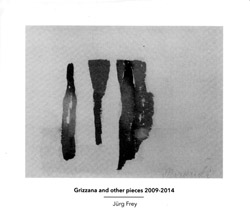




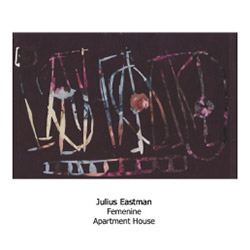


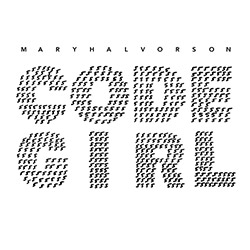


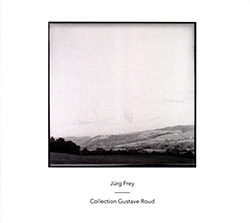
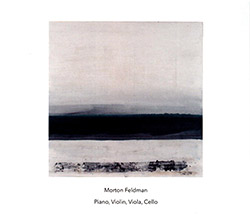

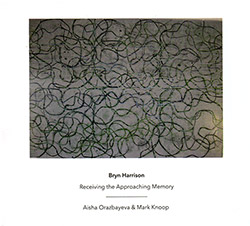
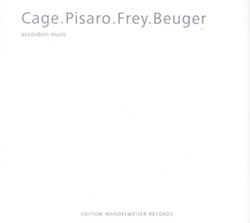
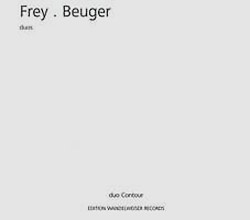

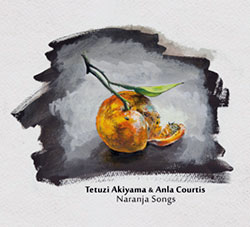


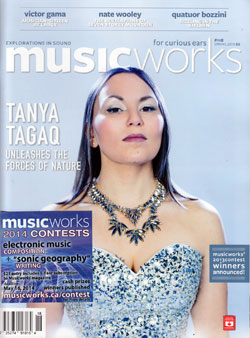
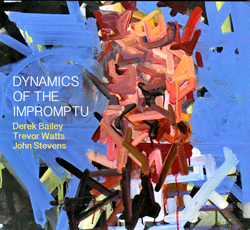


![HobbyHouse (Mia Dyberg / Axel Filip): HobbyHouse [CD + DOWNLOAD]](https://www.teuthida.com/productImages/misc4/36944.jpg)
![Mines, Kelsey / Erin Rogers: Scratching At The Surface [CD + DOWNLOAD]](https://www.teuthida.com/productImages/misc4/36945.jpg)
![Nebbia, Camila (feat/ Marilyn Crispell / Lesley Mok): A Reflection Distorts Over Water [CD + DOWNLOAD]](https://www.teuthida.com/productImages/misc4/36946.jpg)
![Vanheerentals, Adia: Taking Place [CD + DOWNLOAD]](https://www.teuthida.com/productImages/misc4/36947.jpg)
![Mines, Kelsey / Vinny Golia: Collusion and Collaboration [CD + DOWNLOAD]](https://www.teuthida.com/productImages/misc4/36948.jpg)
![Parkins, Zeena: Lament For The Maker [CD + DOWNLOAD]](https://www.teuthida.com/productImages/misc4/36949.jpg)
![Evans, Peter / Mike Pride : A Window, Basically [CD + DOWNLOAD]](https://www.teuthida.com/productImages/misc4/36950.jpg)


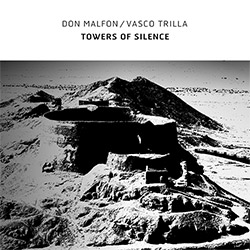

![Frey, Jurg : Composer, Alone [3 CDs]](https://www.teuthida.com/productImages/misc4/36927.jpg)
![Belorukov, Ilia / Alex Riva: Wrestling For Futility [CASSETTE w/DOWNLOAD]](https://www.teuthida.com/productImages/misc4/36994.jpg)
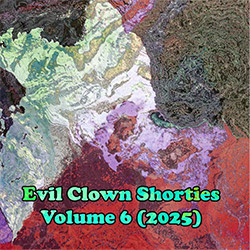
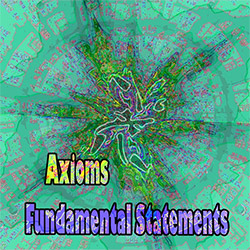
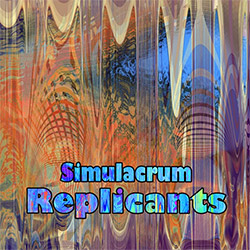
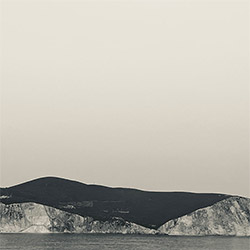




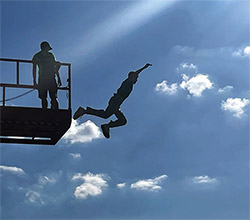
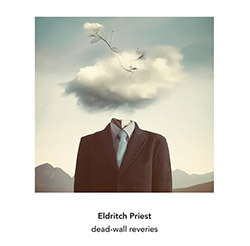


![Agnel, Sophie: Learning [VINYL]](https://www.teuthida.com/productImages/misc4/36841.jpg)

![Monaco, Amanda (w/ Michael Attias / Sean Conly / Satoshi Takeishi) : Deathblow [VINYL+ DOWNLOAD]](https://www.teuthida.com/productImages/misc4/36956.jpg)
![Frey, Jurg with ensemble]h[iatus: Je Laisse A La Nuit Son Poids D](https://www.teuthida.com/productImages/misc4/36988.jpg)

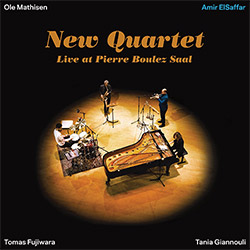
![ElSaffar, Amir / New Quartet : Live at Pierre Boulez Saal [VINYL]](https://www.teuthida.com/productImages/misc4/36830.jpg)


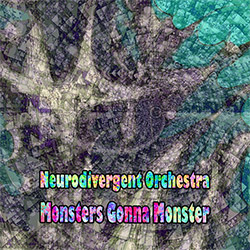

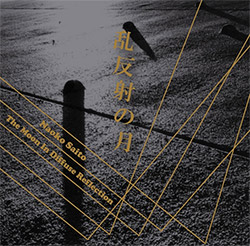
![Musicworks Magazine: #152 Fall 25 [MAGAZINE + CD]](https://www.teuthida.com/productImages/misc4/37004.jpg)
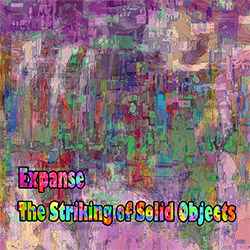


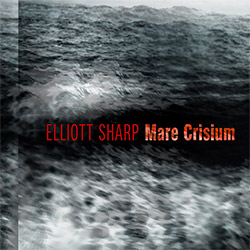


![[ahmed] (Thomas / Grip / Gerbal / Wright): Sama](https://www.teuthida.com/productImages/misc4/36976.jpg)
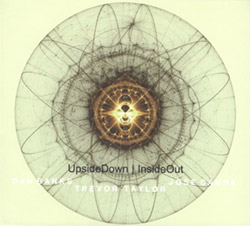
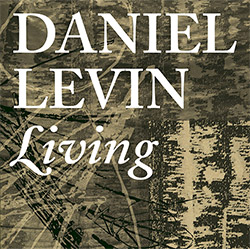
![Cleaver, Gerald / Brandon Lopez / Hprizm: In The Wilderness [COLOR VINYL]](https://www.teuthida.com/productImages/misc4/33060.jpg)
![McPhee, Joe : Defiant Jazz: a Joe McPhee Taster [VINYL]](https://www.teuthida.com/productImages/misc4/36859.jpg)
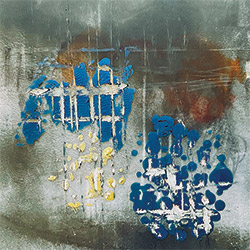
![Mateen, Sabir / Patrick Holmes / Federico Ughi : Survival Situation [LTD VINYL LP + DOWNLOAD]](https://www.teuthida.com/productImages/misc4/29891.jpg)
![Tucker, Dave / Pat Thomas / Thurston Moore / Mark Sanders: Educated Guess Vol. 1 [COLORED VINYL]](https://www.teuthida.com/productImages/misc4/30183.jpg)
![Sarian, Michael / Matthew Putman: A Lifeboat (Part I) [COLORED VINYL]](https://www.teuthida.com/productImages/misc4/30426.jpg)

![Genthon, Anouck / Lionel Marchetti: Suite Blanche [2 CDs]](https://www.teuthida.com/productImages/misc4/36642.jpg)
![Toeplitz, Kasper T.: Erosions Programmees [CD + BOOKLET]](https://www.teuthida.com/productImages/misc4/36639.jpg)
![Gate, The : Amost Live [CASSETTE + MAGAZINE]](https://www.teuthida.com/productImages/misc4/36836.jpg)
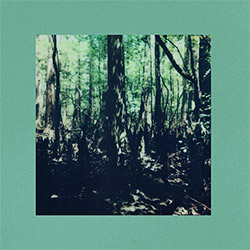
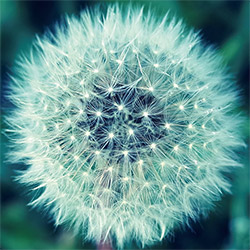




![A Magic Whistle: The Solar Cell [VINYL]](https://www.teuthida.com/productImages/misc4/36658.jpg)

![McGee, Hal: Columbus Expedition [Cassette w/ Download]](https://www.teuthida.com/productImages/misc4/36650.jpg)
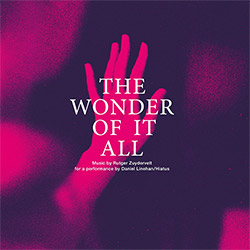
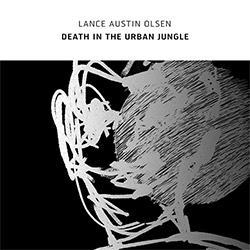
![Jaeger, Kassel: Fernweh [VINYL 2 LPs]](https://www.teuthida.com/productImages/misc4/36541.jpg)





![+DOG+: The Light Of Our Lives [2 CDs]](https://www.teuthida.com/productImages/misc4/36009.jpg)


![Eternities: Rides Again [CASSETTE]](https://www.teuthida.com/productImages/misc4/36247.jpg)

![Lopez, Francisco: Untitled (2021-2022) [2 CDs]](https://www.teuthida.com/productImages/misc4/36438.jpg)



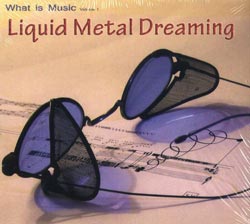

![Pisaro-Liu, Michael: Within (2) / Appearance (2) [2 CDs]](https://www.teuthida.com/productImages/misc4/36831.jpg)
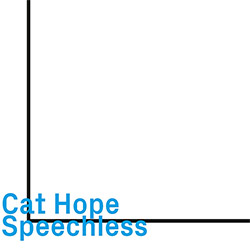
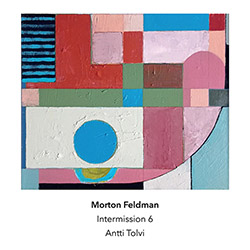



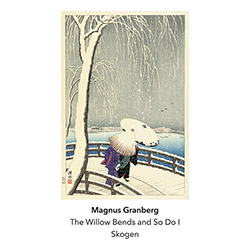
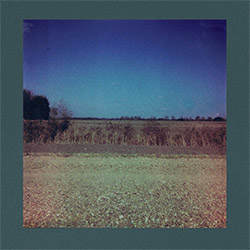

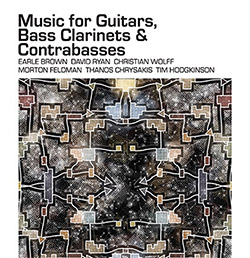
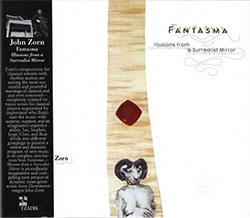
![Musicworks Magazine: #151 Summer 25 [MAGAZINE + CD]](https://www.teuthida.com/productImages/misc4/36559.jpg)

![Brown, Dan / Dan Reynolds: Live At The Grange Hall [unauthorized][CASSETTE]](https://www.teuthida.com/productImages/misc4/36245.jpg)


![Zorn, John: The Song of Songs [CD + CD BOOK]](https://www.teuthida.com/productImages/misc4/36923.jpg)
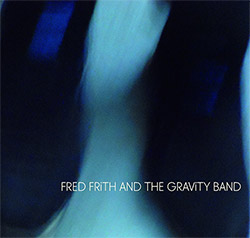
![Coultrain: Mundus [COLORED VINYL]](https://www.teuthida.com/productImages/misc4/33056.jpg)
![Hprizm: Signs Remixed [COLORED VINYL]](https://www.teuthida.com/productImages/misc4/30635.jpg)
![Halls Of the Machine: All Tribal Dignitaries [CASSETTE w/ DOWNLOAD]](https://www.teuthida.com/productImages/misc4/36134.jpg)
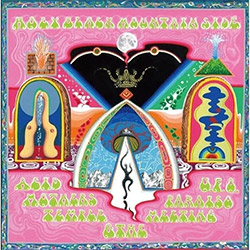
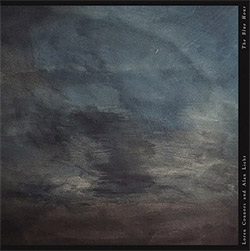

![Koenjihyakkei: Live at Club Goodman [2 CDs]](https://www.teuthida.com/productImages/misc4/36111.jpg)

![Sorry For Laughing (G. Whitlow / M. Bates / Dave-Id / E. Ka-Spel): Rain Flowers [2 CDS]](https://www.teuthida.com/productImages/misc4/35985.jpg)

![Rolando, Tommaso / Andy Moor : Biscotti [CASSETTE w/ DOWNLOADS]](https://www.teuthida.com/productImages/misc4/36106.jpg)


![Electric Bird Noise / Derek Roddy: 8-10-22 [CD EP]](https://www.teuthida.com/productImages/misc4/35970.jpg)








![Elephant9 : Mythical River [VINYL]](https://www.teuthida.com/productImages/misc4/34624.jpg)



![Elephant9 with Terje Rypdal: Catching Fire [VINYL 2 LPs]](https://www.teuthida.com/productImages/misc4/35355.jpg)
![Coley, Byron: Dating Tips for Touring Bands [VINYL]](https://www.teuthida.com/productImages/misc4/17906.jpg)

![Lost Kisses: My Life is Sad & Funny [DVD]](https://www.teuthida.com/productImages/misc4/lostKissesDVD.jpg)